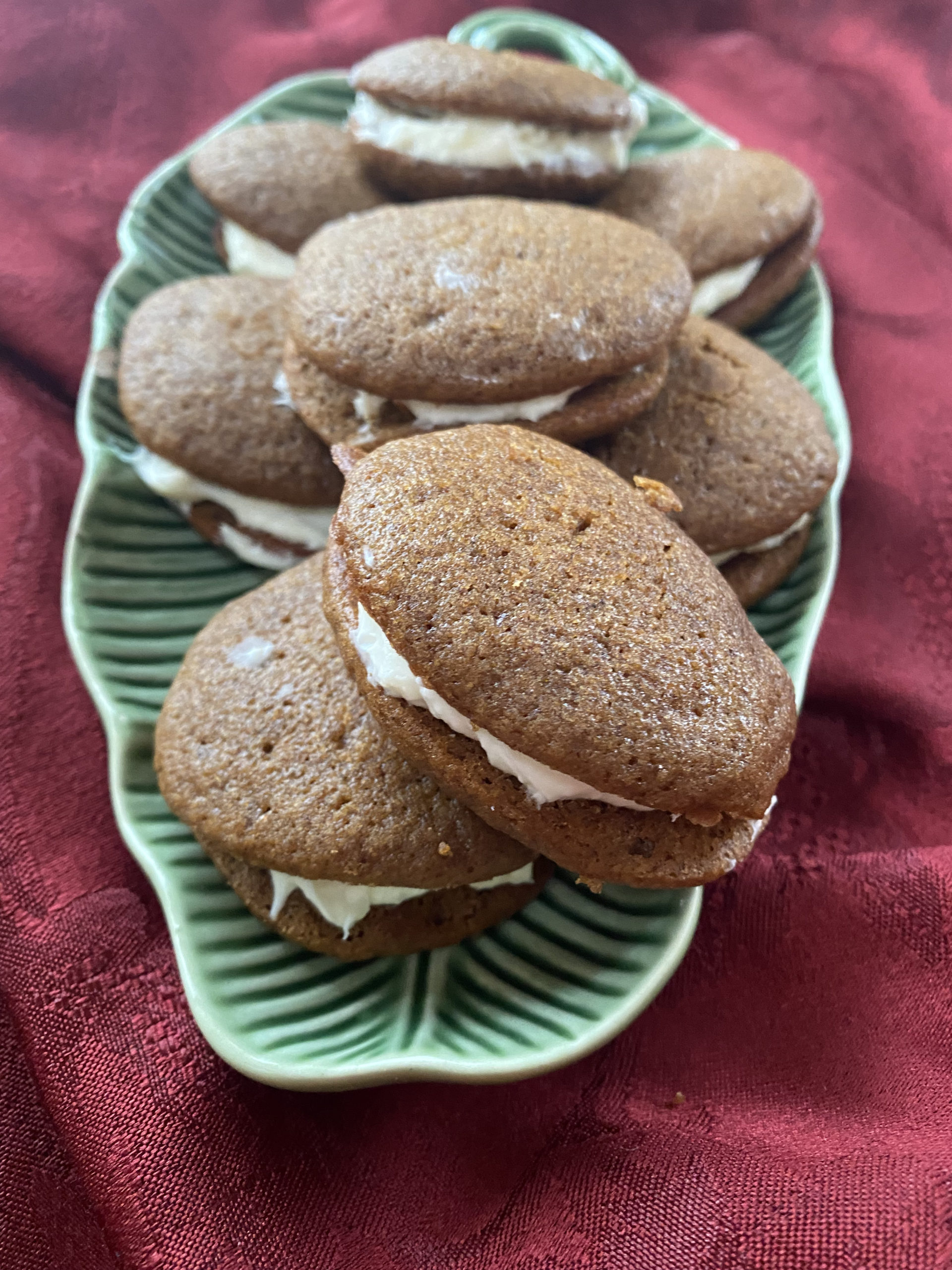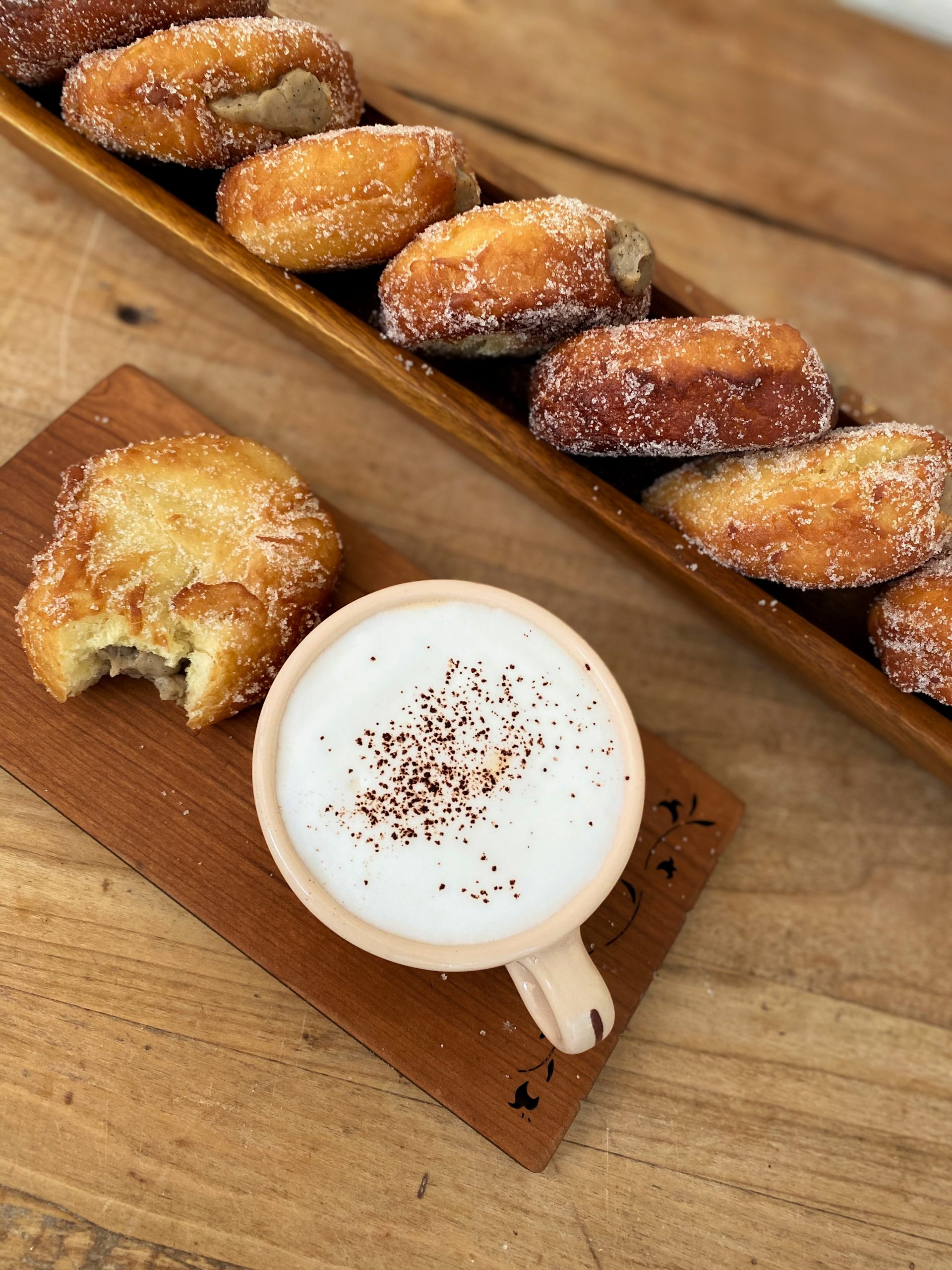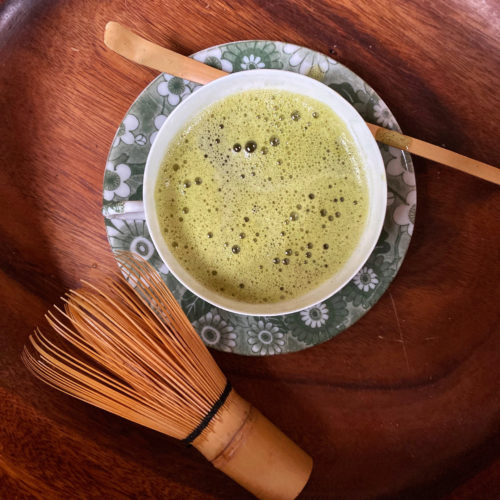
The idea of drinking tea for good health has been around for centuries, and is a concept that continues to prevail. Today, specialty tea consumption continues to hit new heights, and a host of teas from white, green, oolong and black, to herbal, iced, ready-to-drink beyond, are enticing consumers with exciting beverage choices.
In fact, according to the Tea Association of the U.S.A. Inc., “In 2015, Americans consumed well over 80 billion servings of tea, or more than 3.6 billion gallons. About 85% of all tea consumed was Black Tea, 14% was Green Tea, and the small remaining amount was Oolong, White and Dark Tea.”
While black tea continues to be the most popular in the U.S., green tea varieties have been posting a strong showing in recent years. And, one green tea – Matcha – is finally enjoying the spotlight.
With that in mind, Family Eats decided to turn to Linda Villano, owner of serendipiTea to learn a bit more about this ancient tea and preparation method.
Family Eats: Especially recently, what is the consumer appeal of Matcha?
Linda Villano: For some consumers there is the history, the art-form, the mystique and lure of something that is symbolic and respected in practice. For others Matcha represents Something New, Something Different, Something Healthy, Something Colorful. It also seems that the powder format is easier than the process of steeping tea leaves, which has lured a new wave of tea enthusiasts.
Lately, matcha has received a lot of media attention –
Another thing helping drive its popularity is the increased media attention to Matcha, maybe due to its healthful nature, ease of brewing, or its versatility. Media is always talking about the healthy benefits of green tea, and of course Matcha is a green tea. It is also a powder, with the appeal of being ‘instant’ — and many believe that it is easier to prep than a cuppa made from tea leaves. It’s so easy to scoop the tea (Matcha &/or Chai Mix) into a cup, add hot water & whatever else is desired, give it a good stir/shake & serve.
While the taste of straight Matcha is not for everyone, the café culture has made this healthy drink appealing by creating Matcha Lattes, Matcha Smoothies, Matcha Coolers, and the like. Matcha is Extremely Versatile!!
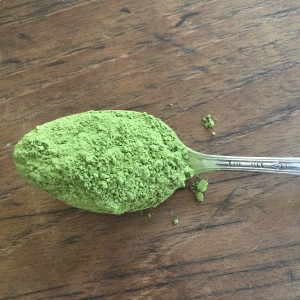
FE: Can you tell us a bit about how Matcha is processed?
LV: Very briefly: Green tea leaves are ground to fine powder. For a slightly longer version: Tea leaves which have been shade-grown (covered from sunlight for a period of time prior to harvesting) are harvested then steamed, air-dried and de-stemmed (stems, blemishes removed from the leaves) before being ground to powder. The leaves at this point are called Tencha (partially-processed). In Japan the grinding or milling is done by sifting the leaves between two stones with specifically cut ridges, the stones compress while the stones rotate.
There are several grades of Matcha, the highest being ceremonial. This is very expensive and the taste is not always appealing to consumers — It is thick and more stringent than other grades. The price makes it impractical for daily use (unless, of course, money is of no object).
A culinary grade Matcha is best suited for daily use — when making Matcha to drink and using it as an ingredient in the kitchen.
FE: As you mentioned, your Matcha is certified organic culinary grade. Is there an issue with good quality Matcha and bad quality Matcha being out on the market — and, if so, how can the consumer tell the difference.
LV: There is so much “Matcha” available to purchase it does pay to know the origin. Countries, other than Japan, are manufacturing powdered green tea and promoting it as Matcha. The consumer might be more discerning as to the origins of the tea being used ~ look for origin on packaging, if not labeled, then ask. And, since the entire leaf is being consumed, as opposed to just the liquor from a usual tea steeping process, one might consider Certified Organic options for health reasons. This would make sense as the reason many people are turning to Matcha is for the reputed health benefits.
FE: Is Matcha considered ‘heathier’ than traditional green tea? If so, what makes it healthier?
LV: It is reported that the healthy benefits are greater. Since Matcha is tea leaf ground to fine powder, one is consuming the entire leaf rather that drinking an extract of the leaf (as is done with steeped tea leaves) ~ so all the benefits are received in a more intensive, direct way.
FE: Is there anything else you would like to add that be beneficial for consumers to know about Matcha?
LV: Make it your own! Discover new ways to include Matcha to your daily life-style. Since Matcha is a powder the applications are ENDLESS! There are countless ways to prepare Matcha — at home or in any café/tea house/food service environment. Here are a few suggestions!
Beverages
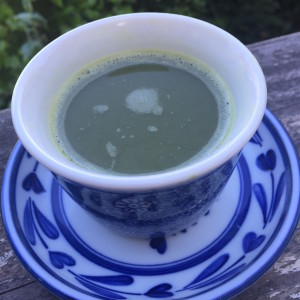
It is recommended that the powder be passed through a small sieve/filter to remove clumps ~ a fine-mesh infuser from a tea pot is a good tool.
Traditional: Whisk with hot water in bowl to make a hot, frothy tea. Bowls are very personal and a part of the Matcha experience is selecting a bowl that feels right to YOU.
Chilled on the run: Add some Matcha to a water bottle & shake rigorously for anti-oxidant & caffeine boost.
Chilled at home: Add water, Matcha and ice to a cocktail shaker, give a good mix then shake rigorously.
Sparkling: Prep as chilled Matcha then use the SodaStream or similar tool with cartridge to make some bubbly Matcha.
Energize the Smoothie: Add a scoop of Matcha to any fruit or green smoothie for an anti-oxidant boost.
Lattes: Prep with steamed milk/frother.
Creamy Matcha: Whisk Matcha into simmering milk (any type: milk, soy, almond, coconut, etc.) for a richer, creamier experience than a latte.
Cocktails: Endless uses especially with the Cocktail Shaker,
*Note that any sweetener (honey, agave, simple syrup), herbs or spices can be added to taste to any of the above applications. For added insight on hoe to prepare Matcha, visit Serendipitea’s matcha page
Culinary/Baking
The Japanese have been using Matcha in sweets and savories for years. If you have opportunity to visit a Japanese grocery store, you’ll find many items made with Matcha (noodles, broths, packaged cakes, mochi, candies, sweets, chocolate bars, etc.)
There are COUNTLESS recipes in which Matcha (powder & liquid) is used as an ingredient: baked goods, chocolate, fudge, confections, cake batters, icing, ice creams, pour over shaved ice, candy, lollies . . .
Matcha used in the flour for noodles, Matcha used in/as broth, Liquid Matcha poured over Rice, Ingredient in Sauces, Matcha Powder added to Salts, Sugars & Rubs, Matcha Powder Sprinkled over any type of food to add that healthy boost…..endless.
DIY Beauty Care
Face/Body Masks galore ~ a quick google search will pull up lots of blogs with Matcha concoctions.
Save



